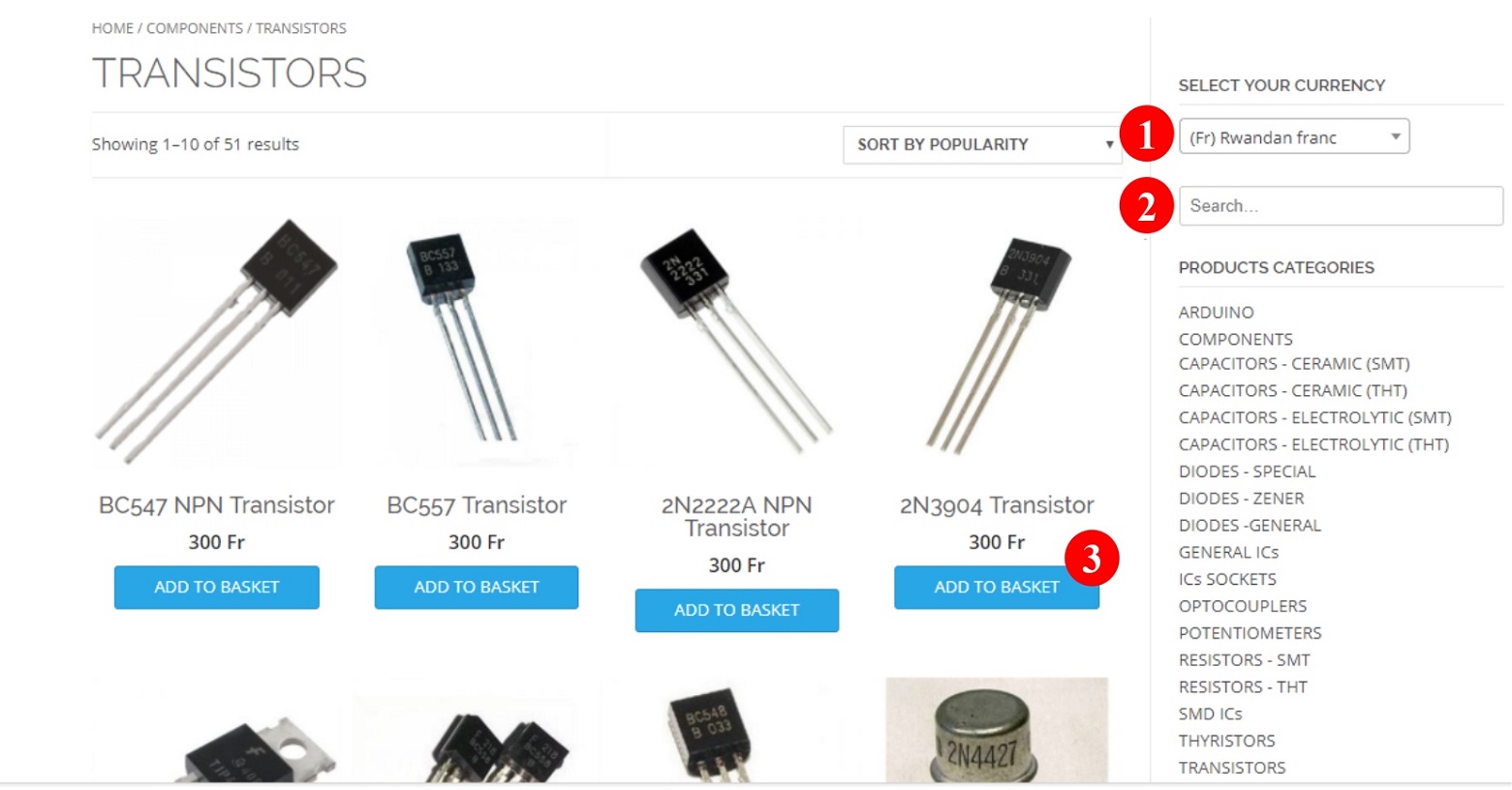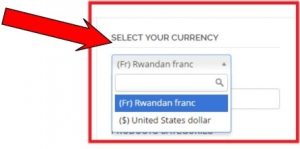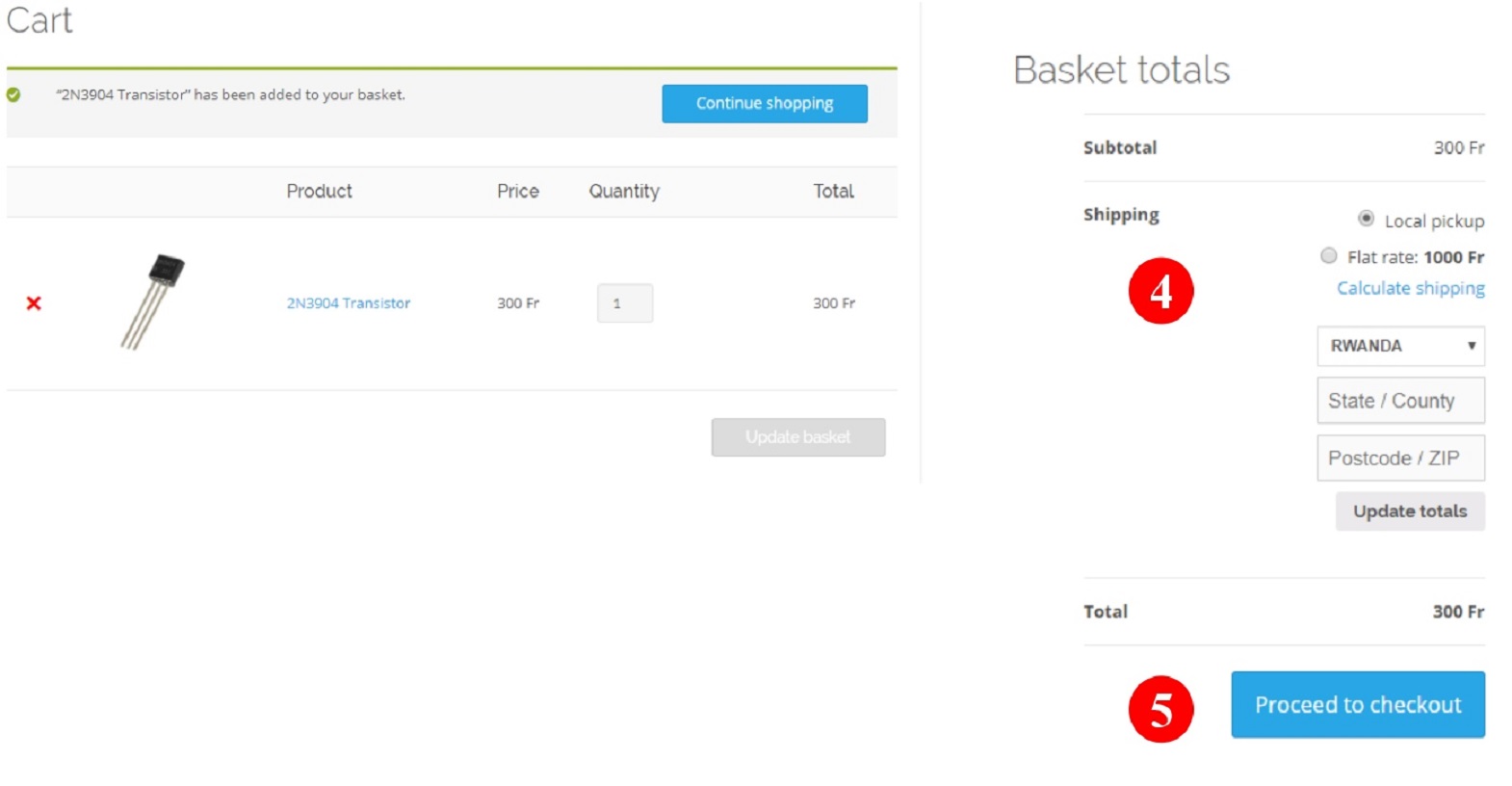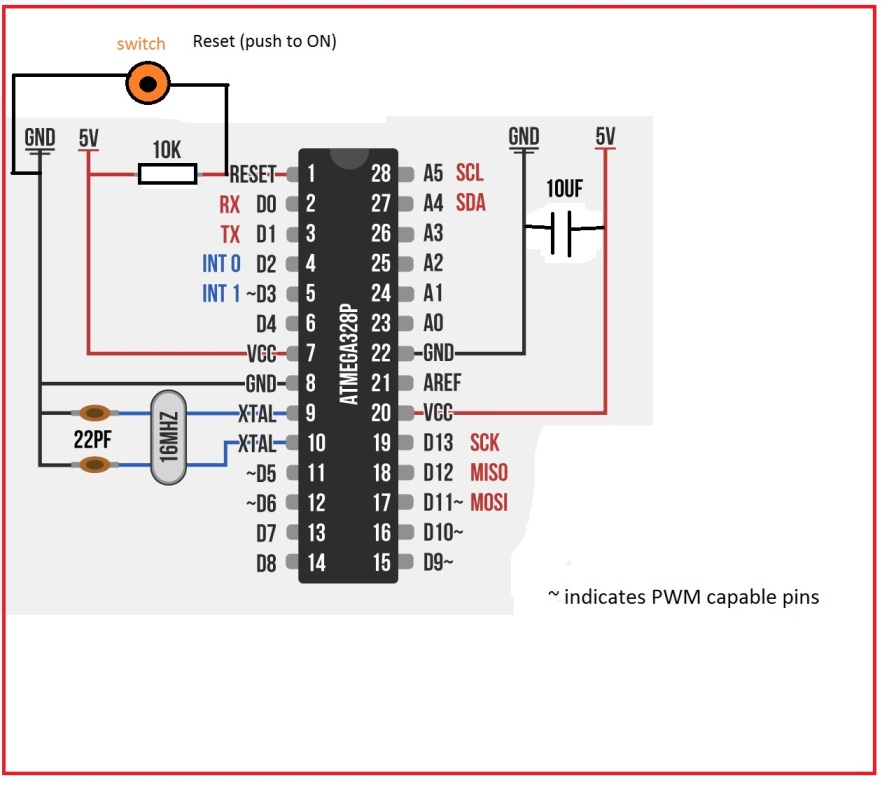You wonder how you can place an order or buy the things you need via Faranux Electronics website? www.faranux.com, This tutorial is for you.
you can buy from your work, your home comfort or from anywhere worldwide, here is guide with pictures that shows you step by step how you can place an order online.
Faranux Electronics is an online retails shop that has been around for people with interest in electronics.
Students, hobbyists, researchers, hardware products developers, tinkers,small and medium enterprises. we have Components,Sensors,Discrete semiconductors parts,Development boards, Starter kits, Tools and Measurement instrument that suit your application.
The following are steps to follow:

- Select your currency
 : The currency switcher is located in top right corner. There 2 currencies on the website, one being Rwandan franc (Fr) and the United States dollar ($)
: The currency switcher is located in top right corner. There 2 currencies on the website, one being Rwandan franc (Fr) and the United States dollar ($)
Note that the currency acceptable for all international orders is $ and the payment method is PayPal .
while people in Rwanda can use both currencies ($ and Fr) if you want to pay by using PayPal you will need to switch to $.
2. Search for the item(s) by using the search bar or by using products categories located on the right side then
3. Add to the basket the product(s). You can add many items in the cart as much as you want; remember, items are not yours until you check out!

- Calculate Shipping
After loading item(s) in the cart you will need to calculate the shipping and Select Flat rate before proceeding to checkout, if you are located in Kigali; you can select Local Pickup as a shipping method in checkout. If you select this option, we’ll hold your order here so you can come pick it up. If you want your order to be delivered to your door then calculate the shipping cost by selecting Rwanda as your country.
5. Proceed to Checkout
You will be able to select your payment method by clicking on the proceed to checkout button,
the payment methods includes:
1.Local Payments
a) Cash on deliver
b) Bank transfer
c) Paypal : Only in $
d) Mobile Money: Customer covers sending and receiving chargers
2. International Payments:
a) Paypal
b) Bank transfer
NOTE: Most international shipments will incur additional fees in the form of duties and taxes. These fees are your responsibility




